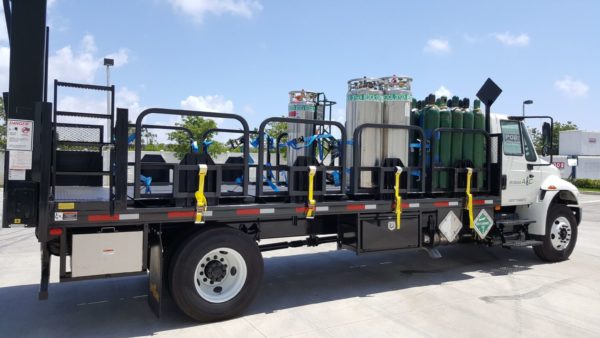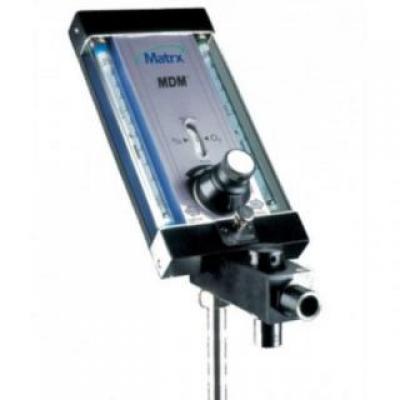More from medical gas supplier
More in Politics
Related Blogs
Archives
Social Share
Unlocking Efficiency: The Evolution of N2O Flowmeters
Body
What are N2O flowmeters?
Nitrous oxide (N2O) flowmeters or sensors are instruments used to monitor, measure, or record the rate of flow, pressure, or discharge of nitrous oxide in an anaesthesia system.
History and evolution of N2O flowmeters
Until the late 19th century, when oxygen and nitrous oxide were introduced as compressed gases in cylinders, an anaesthesia machine was not necessary for administering anaesthesia to patients, even after the invention and public demonstration of ether anaesthesia by Morton in 1846. By then, attaching the gas cylinders required a metal skeleton.

Henry Boyle modified the American Gwathmey apparatus of 1912 to create the Boyle's machine in 1917. The most well-known early continuous flow anaesthetic machine was the Boyle's machine. Fine components from the original Boyle's machine can still be found in contemporary models. These include breathing system, a metal and glass ether vaporizer bottle, flow meters, pressure gauges on oxygen cylinders with pressure-reducing valves, and a high-pressure gas supply.
With the early anaesthetic machines, the patient would receive a decreased fraction of oxygen or even a hypoxic gas mixture in the event that an oxygen cylinder ran out of gas or the pipeline supply failed in the face of a strong N2O flow. Before the invention of pulse oximetry, in reality, hypoxemia and patient harm could happen if the anaesthesiologist failed to identify the machine malfunction right away.
The N2O pressure regulator in the later anaesthesia machines was designed so that the pressure of the oxygen flow was necessary to release the flow of N2O because there was no separate oxygen fail-safe mechanism. Hence, N2O regulators were designed to function as oxygen's "slave" regulator and as its "master" regulator. When this was first implemented as a safety measure, it was believed that the patient could not receive a hypoxic mixture because, as the oxygen in the cylinder or pipeline supply ran out, the N2O regulators' output would likewise stop, alarming the anaesthesiologist that the reservoir bag would burst. But as it turned out, this wasn't a perfect method because the hypoxic mixtures may still be delivered if oxygen was cut off at the N2O and oxygen flowmeter level. Proportionating devices had to be introduced at the flowmeter assembly in modern machines.
Sequence of N2O flowmeters
The sequencing positioning of the flowmeters was discovered to be crucial in the efforts to unlock the efficiency of N2O flowmeters. In order to avoid the patient from receiving a hypoxic mixture, oxygen flowmeters should be placed downstream of all other gases. The patient would receive a hypoxic mixture that contained more N2O than oxygen if there was a break or leak in the middle tube, which would allow some oxygen to escape through the break. If, on the other hand, N2O is upstream and oxygen is downstream, a leak in the middle tube would not affect the patient's percentage of inspired oxygen, but it would cause lighter planes of anaesthesia.
Thus, over the course of the devices' existence, the efficiency of N2O flowmeters has improved. Present-day digital flowmeter technology provides exceptional patient safety and comfort together with maximum quality and ease for medical professionals. It makes little sense, for instance, to add controlling the balance of gas flow to the list of things that dental professionals already have to concentrate on during treatments. That is the reason why modern anaesthesia machines have adopted digital N2O flowmeters, which are suitable for use by healthcare practitioners.
The medical professional caring for a patient only needs to determine the patient's tidal volume or lung capacity using the modern digital N2O flowmeters; the flowmeter will maintain this same total flow even while the practitioner titrates in the nitrous oxide. Because of its convenience, this essential component of N2O flowmeters and familiar N2O hoses makes using modern anaesthetic machines simpler.

Furthermore, modern N2O flowmeter anaesthesia devices are better at preventing infections since they lack any knobs or dials to change. This is due to the fact that the system's flat panel touchscreen is the only surface that can be cleaned or covered with a reusable barrier strip after each usage.
Need assistance with getting a good N2O or medical oxygen flowmeter?
Considering how quickly N2O flowmeters for anaesthetic machines have evolved, it is easy to purchase one that is out of step with the past evolution. The newest anaesthetic systems may not be as effective for you if that happens. Working with professionals is therefore essential when purchasing any N2O hoses, flowmeters, or regulators for your anaesthetic equipment.
Many medical professionals have found that Broward A & C Medical Gas Specialists are helpful in this area. They hold an inventory of every part used in medical equipment, such as medical oxygen flowmeters and N2O flowmeters.
Check out their inventory and request a quote right away.












Comments